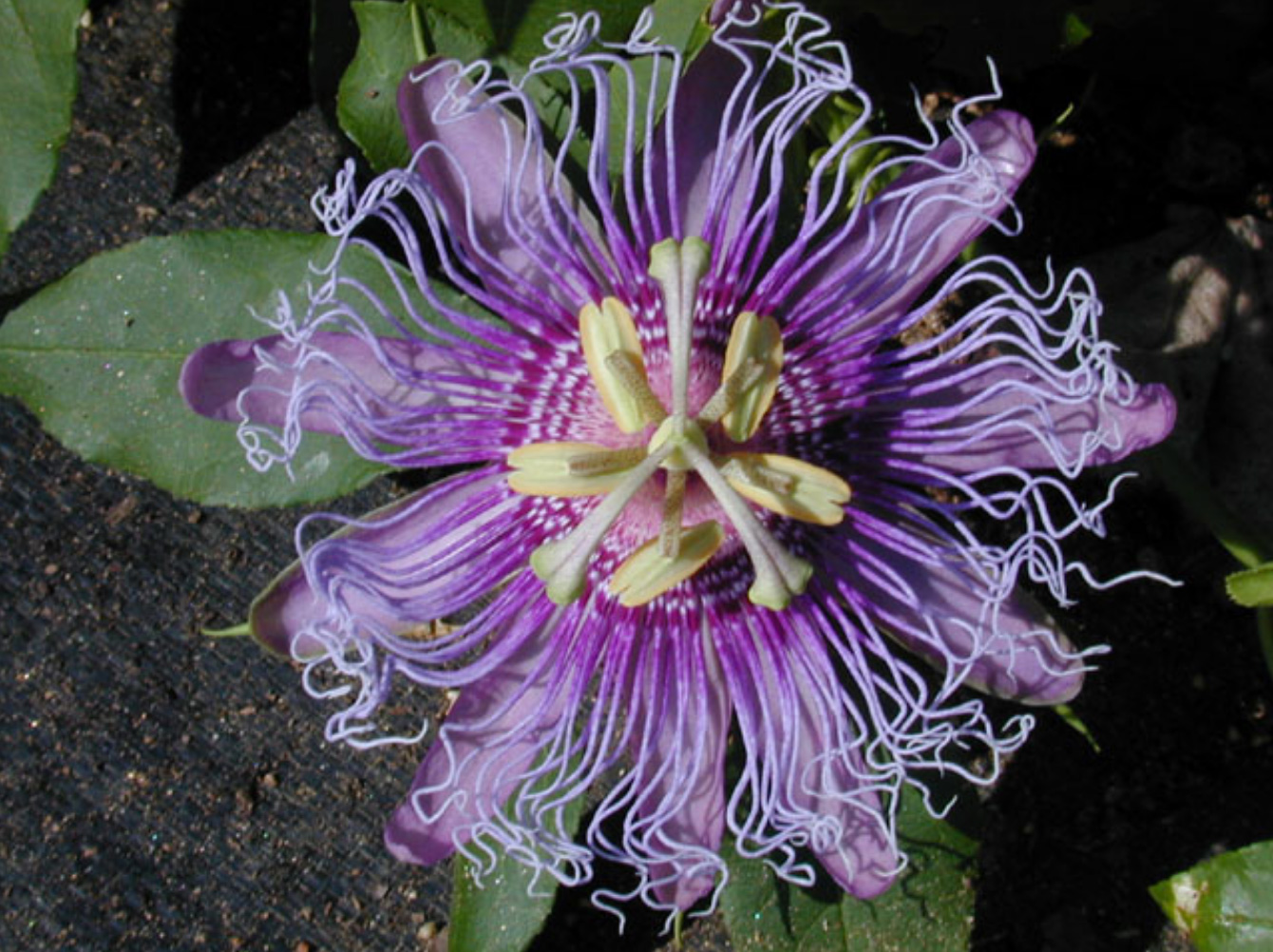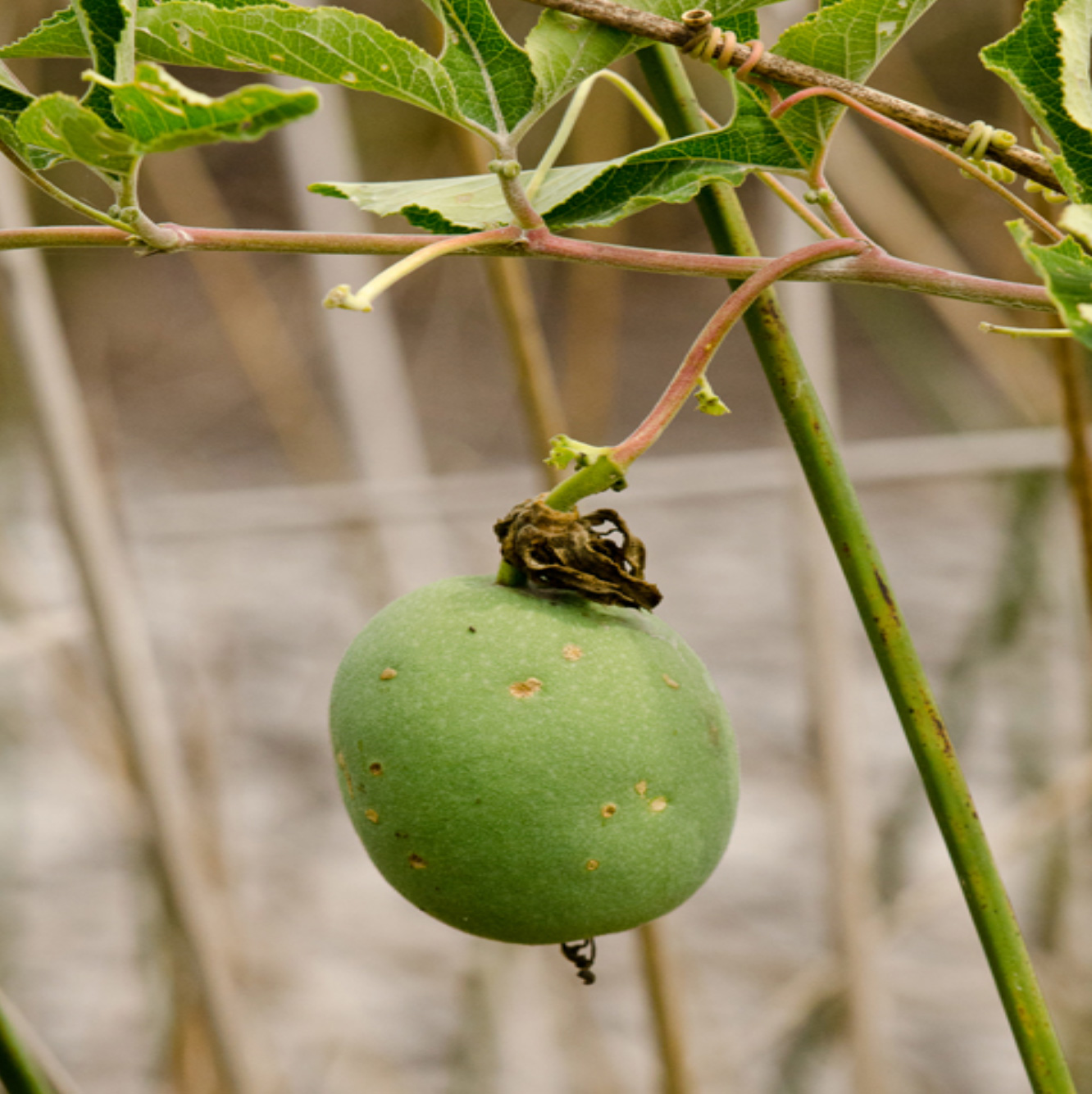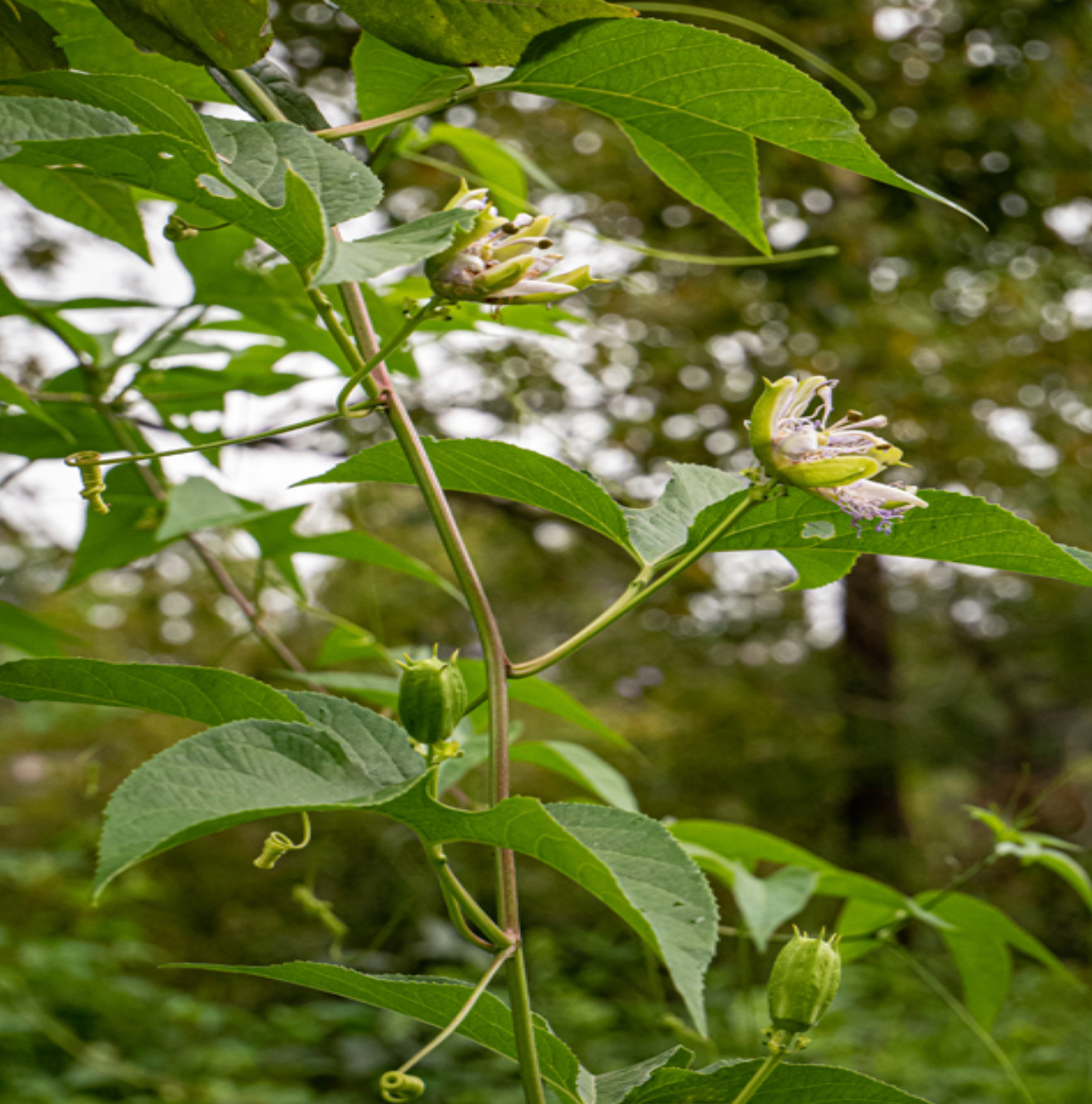Purple Passionflower
The purple passionflower is a beautiful, rapidly growing vine with unique purple flowers and is native to southeastern United States and Bermuda.
Scientific Name: Passiflora incarnata L.
Common Name: Wild passionflower, maypop, apricot vine, old field apricot, Holy-Trinity flower,
molly-pop, passion vine, pop-apple, granadilla, Maycock, maracock, white sarsaparilla
Plant Family: Passifloraceae (Passionflower Family)
Etymology: Passiflora is Latin for the word passio which means passion and flos which means flower. Incarnata is Latin for flesh colored.
Indigenous Uses
Native Americans primarily used the purple passionflower for its medicinal properties. The root was typically used as a poultice that could be applied to boils, cuts, bruises, and other inflammations. Passionflower leaves were also boiled to serve as tea to calm nerves or as a tonic (typically by the Inca tribe). Teas made from the passionflower were often used to help with insomnia as well. The Cherokee tribe was known to boil and fry young shoots and often mixed them with other greens to consume.
Edible Parts
The primary edible portion of the plant is the maypop fruit that ripens from July to October. They can be eaten off the vine raw or made into jellies, jams, and desserts. The taste of the fruit is said to be similar to guava. The seeds within the maypop can also be eaten but are not necessarily desirable due to their hardness. The shoots of the passionflower are edible and are often fried or boiled. The purple flowers can be eaten as well and are often used as a garnish in dishes.
Gathering and Using
The leaves of the purple passionflower are often boiled into teas to help with insomnia, depression, and anxiety through the benefits it has of calming the nervous system. The root can be poulticed (often done by Native Americans) and used for boils, cuts, earaches, and inflammation. Roots can also be boiled down for a tonic. The maypop fruits can be gathered and eaten raw directly from the vine. The fruit is typically cut in half and the meat is scooped out, avoiding the skin. The fruits can also be boiled to make jellies, jams, and added to dessert dishes. The fruits are the most desirable part of the plant for their taste; therefore, most people focus on the plant health in order to allow more fruits to grow (i.e., not taking abundant amounts of the roots or leaves). The flowers can also be eaten raw and are often used as a colorful garnish on dishes, especially desserts.
Permaculture Functions and Considerations
Screening/privacy, medicinal usages, edible, attracts pollinators, deer resistant, drought resistant, wildlife support, aesthetic.
Habitat
The purple passionflower thrives in average, medium, well-drained soil with full sun to partial shade. The flower typically grows in southeastern U.S., particularly in Florida and Texas, but can grow in central and eastern U.S. as far north as Delaware. The plant is also known to be found in Bermuda as well. It thrives in soil with clay, loam, or sand texture with high organic matter. It can be found in environments such as roadsides, prairies, plains, meadows, pastures, savannas, woodlands, and riverbanks.
How to Identify
The purple passionflower is a vine that has axillary tendrils along the group. The plants have three-lobed, dark-green leaves. There are fringed flowers with white-purple petals that are about 3 inches in diameter and protrude from a short leaf axil. Radiating from the central crown of the flower are purple-colored wavy filaments and above the crown are purple-speckled stamens and pistils. During July, egg-shaped fruits called maypops appear with a greenish coloration that becomes yellow towards the fall season. The fruit makes a loud popping sound when it is stepped on (where the name maypop arises from).
 Marcus, Joseph A. Accessed March 11, 2022
Marcus, Joseph A. Accessed March 11, 2022
 Romfh, Peggy. Accessed March 11, 2022
Romfh, Peggy. Accessed March 11, 2022
 Brundage, Stephanie. Accessed March 11, 2022
Brundage, Stephanie. Accessed March 11, 2022
Wildlife Support
The purple passionflower attracts and provides for abundant amounts of wildlife. Many pollinators including butterflies, bees, and carpenter bees are attracted to the flower. The plant also serves as a larval host for butterfly and moth species including the Gulf Fritillary, Zebra Longwing, Crimson-patch longwing, Red-banded hairstreak, Julia butterfly, and Mexican butterfly. Ruby-throated hummingbirds are attracted to the nectar from the flower. Many songbirds, small mammals, and even larger mammals feed on the maypop fruits of the plant. The young tendrils of the plant are often consumed by Wild Turkeys. Deer resistance of the plant is considered to be at a moderate level.
Additional Information
The plant was named passionflower or passion vine because it was said to represent the Christian crucifixion story. The ten petals of the flower were believed to represent the disciples of Jesus (excluding Peter and Judas). The five stamens supposedly represent the wounds Jesus received, the stigmas represent the nails, and the wavy filaments represent the crown of thorns.
Sources
- Diehl, WFS. Lady Bird Johnson Wildflower Center. University of Texas Austin. “Passiflora incarnata.” Wildflower.org. October 19, 2020.
- NC State Extension. “Passiflora Incarnata.” North Carolina Extension Gardener Plant Toolbox. Plants.ces.ncsu.edu. Accessed March 11, 2022.
- Orick, Debbie. “Purple Passionflower.” USDA NRCA Plant Fact Sheet. Boonville Plant Materials Center. August 15, 2008.
- Washington, Betsy. “Purple Passionflower Pops in the Summer.” Virginia Native Plant Society – Northern Neck Chapter. Vnps.org. July 30, 2020.